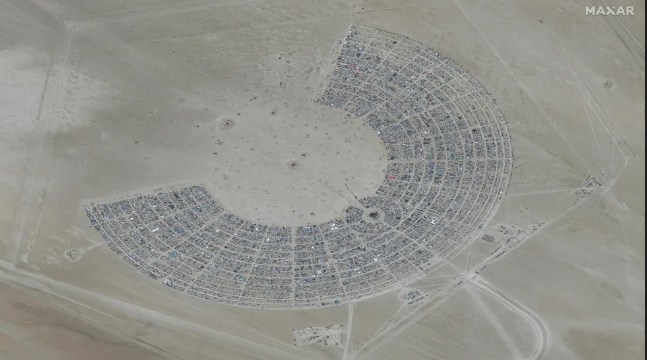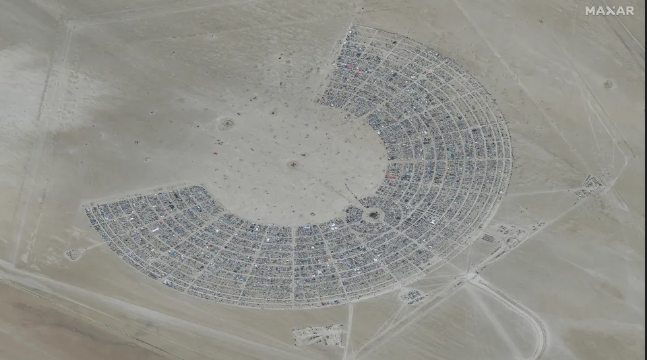by Lauren Ritirato, Staff Writer
The week of Aug. 27 through Sept. 4 marked the 35th annual Burning Man Festival, themed “Animalia.” This event is held in the Black Rock Desert in Nevada and is a microcosm of a small community that for the week is called “Black Rock City.” Within the hand-crafted city are about 1,500 creative camps, built by individual “Burners.” They express the ideas of community, talent and life by providing interactive arts and entertainment experiences for attendees. The climax of the week-long celebration is the burning of a 40-foot-tall wooden man structure. Since the given theme this year was “Animalia,” it revolved around the role of humans in a world of animals.
Burning Man is no stranger to critics, who often compare it to a cult for the upper-class. But this year, Burning Man faced immense backlash from climate protesters. This group of protestors created a blockade on the only route used to get to the festival’s location in an attempt to not allow crowds in. These protestors were advocating for the protection of the environment from the 80,000 people moving tents, clothes and belongings to a remote part of the Nevada desert for a week. Along with this influx of people followed RVs, vehicles, air-conditioning and lights powered by gas-generators which can be extremely detrimental to the environment, especially in such a remote location that is not often inhabited by humans.
Although protesters were removed by police, Burning Man was not safe from the effects of climate change. In the days leading up to the start, Hurricane Hilary left the Black Rock Desert flooded, although, no change in events was planned for other than a slight delay. The desert did dry up in time for it to continue. While the event proceeded, just under an estimated inch of rare rainfall obstructed attendees from leaving. This amount of rain was considered two to three months’ worth of the usual precipitation that happens in the Nevada desert at once. This immense amount of rainfall turned the dry lakebed known as the “Playa” where Burning Man is held into a dangerous trail of mud. Since there is only one exit road, vehicles could not leave the site and “Burners” were stranded for an additional 8 hours.

Students on campus shared their thoughts about Burning Man.
“The chain of disastrous events at the Burning Man festival is similar to that of the infamous 2017 Fyre festival. The environmental conditions and the group affected, however this time at least there are more resources. But it’s hard not to see how this could have been avoided by a simple reschedule,” senior social work major Beck Farell expressed.
Senior digital art and design major Jen Fisk shared their thoughts on the environmental implications of the festival.
“As events like these grow and change, they have the potential to lose track of their original purpose. Once the ‘artists’ are no longer on the side of the people trying to protect the planet, that’s an issue…one of the key principles stated by the organization is that of ‘leaving no trace’ and respecting the environment. Self-expression and the act of finding oneself should not be limited within the confines of a tradition that has become actively harmful to the planet we live on,” Fisk said.
One of the Burning Man event’s key beliefs is “Leave No Trace.” This is their principle to leave nothing behind when unbuilding Black Rock City, which Fisk emphasizes that they have seemed to ignore their originally intended values. Students expressed that they feel the 2023 Burning Man Festival was nothing short of a disaster for the environment in the dry and uninhabited Black Rock Desert, but we have seen no response from “Burners” wanting to change the reputation of this potentially harmful event.




Be First to Comment